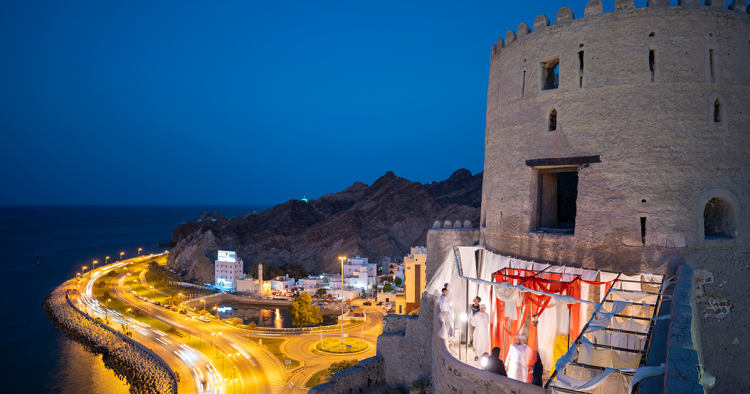The Arab Gulf states are home to a wide range of historical structures, from mountain castles to coastal homes. These centuries-old buildings have long represented the region’s rich history, the lifestyles and architectural approaches of its past inhabitants, and, in the case of forts and watchtowers in particular, its numerous lines of defense against aggressors and invaders.
In Oman alone, there are approximately 1,000 surviving historical forts, castles, and watchtowers, and over the decades, many of them have been restored, rehabilitated, and reopened to local and international tourists to showcase the country’s rich history. However, in recent years, this largely one-dimensional and traditional approach has been changing, giving these structures a new purpose.
A national call for renewal
In recent years, Oman’s Ministry of Heritage and Tourism has opened up the opportunity for companies and institutions from the private sector to bid for the management and development of heritage sites across the country, such as Jabreen Castle. The move is part of the ministry’s efforts to promote investment in the tourism sector under the Oman 2040 Vision framework, aimed at boosting the number of international and local tourists the sultanate receives from 3 million in 2023 to over 11 million by 2040.
Oman has a global reputation for its history and a strong attachment to its culture and traditions in a rapidly changing world, and the sultanate’s heritage sites are a major attraction for international tourists, particularly those interested in cultural tourism. They allow both tourists and locals to tangibly connect with the country’s past. However, if these heritage sites are to remain a regular part of their lives beyond just a single visit, an element of renewal is necessary, which is what has made these ministerial tenders so important. This was all recognized early on by the management of Muttrah Fort.
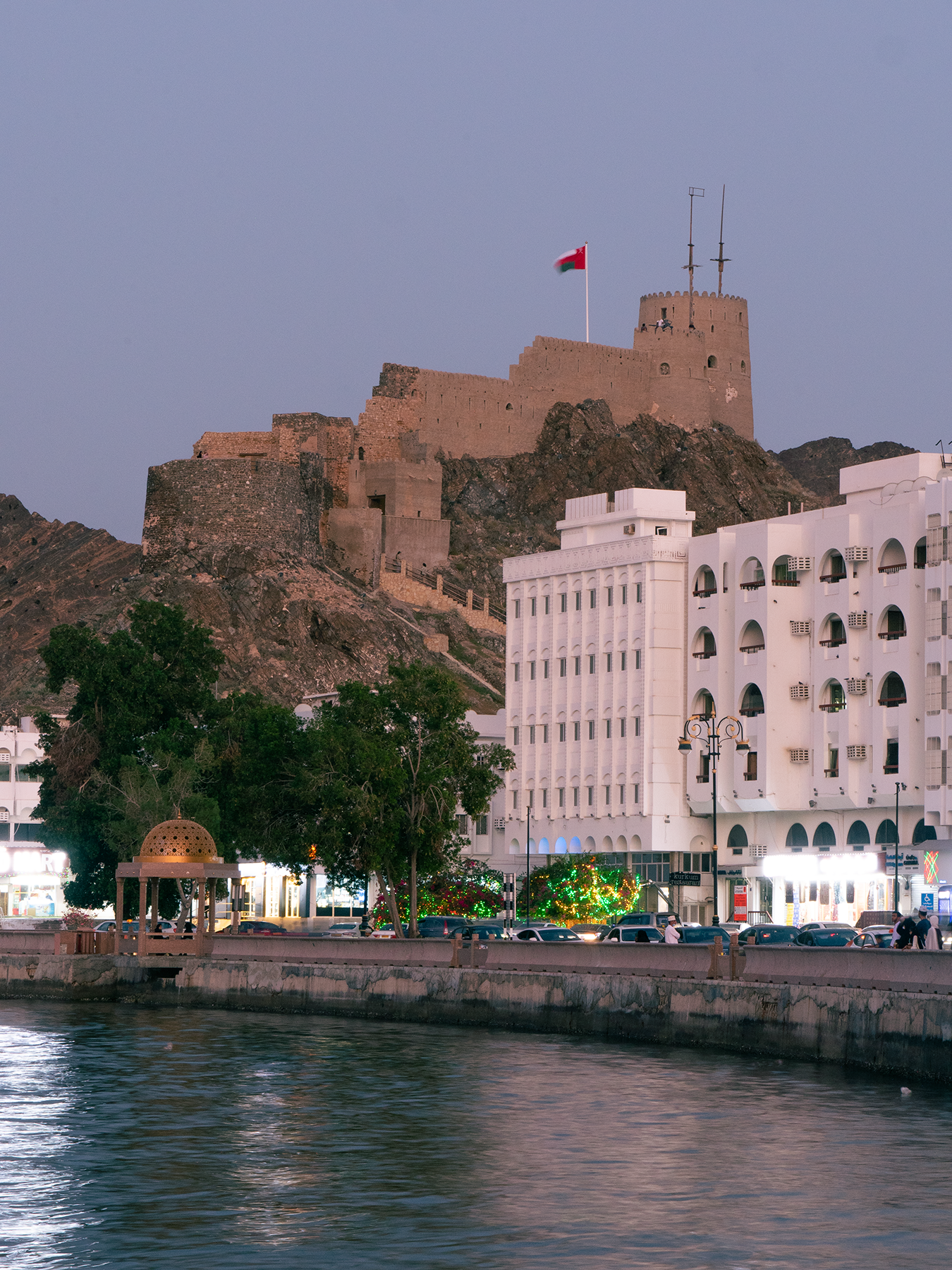
Muttrah Fort: A case study
Situated in the bustling province of Muttrah, the eponymous fort is one of Oman’s most significant historical structures. Believed to have been built in 1507 CE and then bolstered with towers and stronger walls by the Portuguese during their occupation of Oman in the 1560s, the fort eventually returned to Omani control in the 17th century, and historically served as a significant part of a larger network of coastal defense. The structure, which sits on a rocky hill and boasts three circular towers and old cannons, was opened to visitors in 2018 after being closed to the public for renovations. When the Ministry of Heritage and Tourism invited private companies and institutions to bid for the management of Muttrah in 2021, Muttrah Fort LLC, headed by Chairman Hilal Al Busaidi, submitted a bid and won. “I love history and I’m very passionate about it,” Al Busaidi said. “We are lucky to have the opportunity to contribute to its preservation and revitalization.”
Since then, Muttrah Fort’s new management has sought to make the centuries-old structure a more regular and ongoing part of the life of the local community and a destination for visiting tourists. This began with “Ahlam El Asr.” Simultaneously meaning “the dreams of the afternoon” and ”the dreams of the new age,” “Ahlam El Asr” was a surreal art experience that featured some of Oman’s most talented young artists. Held at the fort on March 17-19, 2022, the experience was the result of a collaboration between three groups: Sekka, an award-winning media brand; Teepee, a pop-up glamping outfit that creates unique experiences focusing on cultural immersion, connecting with nature, and fostering a sense of adventure; and Zawraq Collective, a female duo who reimagine Muscat’s art scene. “Ahlam El Asr” marked the first time an art event was hosted at the fort. More than 4,000 art and culture enthusiasts visited over the span of three days, marking the beginning of a new chapter in the fort’s long history and demonstrating the growing interest in the arts in Oman.
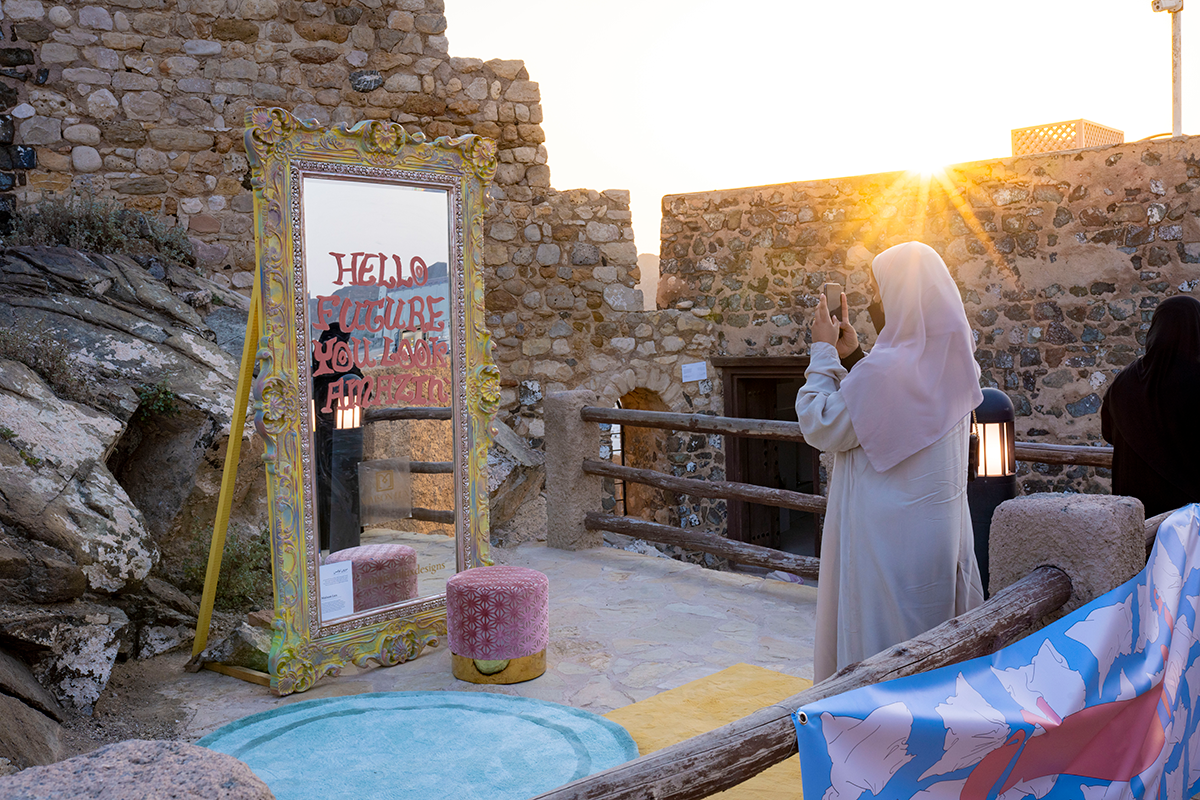
Since then, the fort has regularly played host to other art and cultural events, with some of its most recent ones being the Art Souq, where emerging artists sold their artworks; Musical Night with pianist Sultan al-Rahbi, where visitors enjoyed the tunes of a young Omani musician; and Artists for Gaza, where local artists exhibited thematic works to express solidarity with the Palestinian cause. Such events have attracted as many as 1,800 visitors in a single day — a large number considering that Oman’s heritage sites received a total of 368,498 visitors in 2022. “We have a great young team exploring and working with Omani talents in art, music, and handicrafts, and they come up with events that attract the interest of the visitors,” Al Busaidi said when asked about what’s driving their popularity.
This series of events has, in essence, established the fort as an art and culture hub, a goal that the team has put continuous effort into achieving. The reasons for this are multifold. “Oman is very rich with talents across different art sectors. It is also becoming a cultural tourism destination,” Al Busaidi explained. The fort, with its elevated position and views of the Sea of Oman, Muttrah Corniche, and the Muttrah Souq, already “paints an artistic view of Oman’s beauty.” The fort has therefore made for a fitting venue for Oman’s young and emerging creatives, and is one of Muttrah Fort LLC’s contributions to the cultural tourism industry, which Al Busaidi hopes “will boom.”
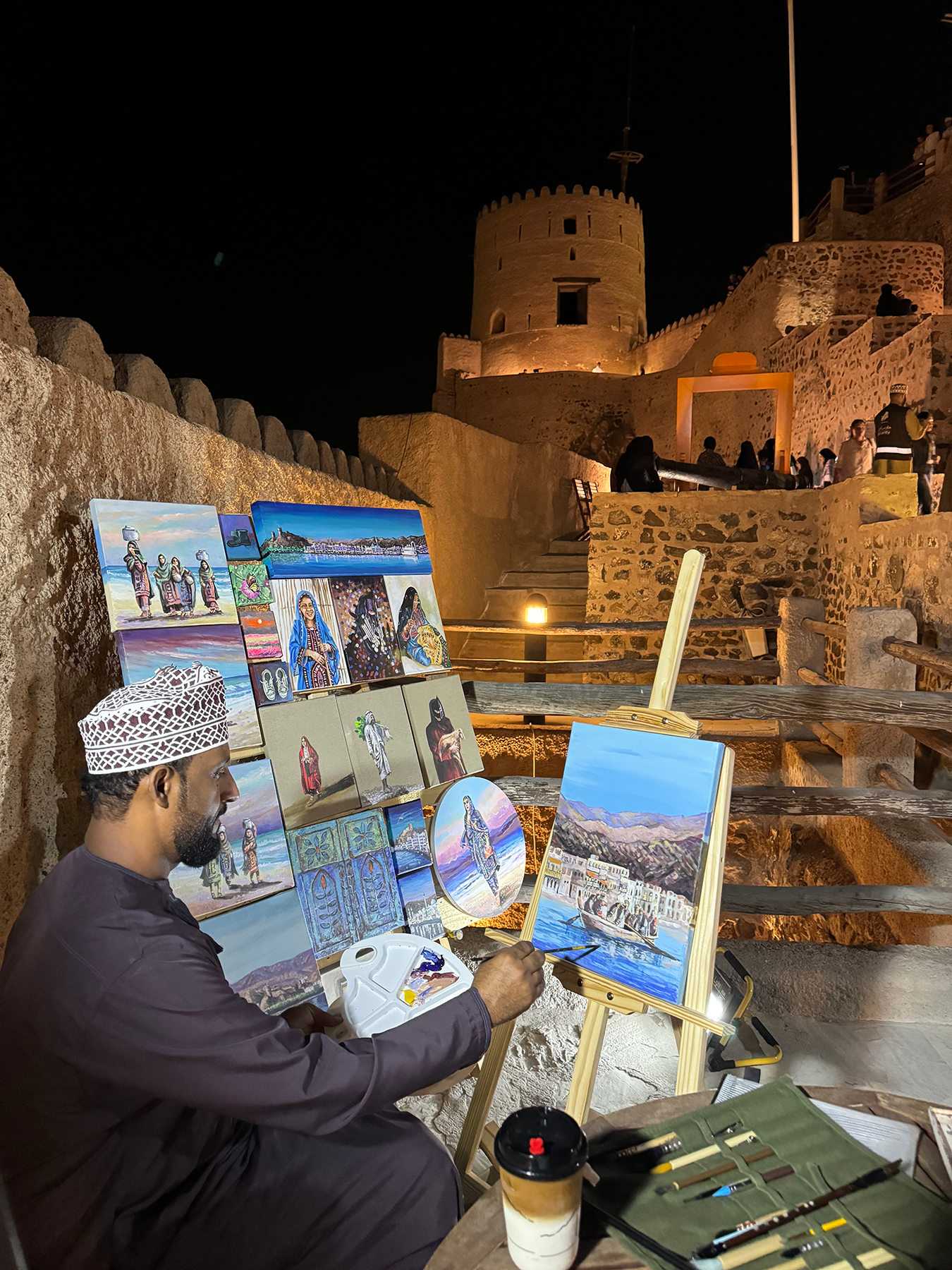
A Gulf-wide metamorphosis
For centuries, Muttrah Fort played a significant role in protecting the Omani people and defending the region against aggressors. In a new era, its role has transformed into preserving and nurturing creative minds by providing a space to showcase their talents. With that, Muttrah Fort remains a part of the Omani people’s lives, just in a different way.
This metamorphosis has captured interest across borders. “We have had many interactions with GCC [Gulf Cooperation Council] teams who share the same interest in preserving heritage and cultural sites, and some teams have visited the fort and taken a closer look at what we do,” noted Al Busaidi. “The Gulf region is very rich with history and can be a destination of cultural and heritage tourism.”
Indeed, in recent decades, authorities have taken notable steps to breathe new and often artistic life into a variety of historical structures throughout the Gulf. In the neighboring United Arab Emirates, for example, this has included Dubai’s hosting of the Sikka Art and Design Festival annually for the last 12 years. The festival is a flagship initiative by Dubai Culture and Arts Authority that celebrates visual art, film, and performance arts by emerging creatives from the UAE and the wider Gulf region. During the festival, art is typically showcased in houses in Dubai’s historic al-Fahidi Neighborhood, where 18th- and 19th-century houses, forts, and alleyways still stand by Dubai’s Creek, although this year’s edition took place in another local historic neighborhood, al-Shindagha, instead.
The direction is part of the authority’s commitment to “enriching the cultural scene of the emirate” and “building bridges of constructive dialogue between various civilizations and cultures to enhance Dubai’s position as a global center for art and culture, an incubator for creativity, and a thriving hub for talent.” In addition to the temporary Sikka Art and Design Festival, al-Fahidi is a permanent home to museums and art studios, such as the Museum of Coffee and Tashkeel Studio and Gallery.
A significant example in Saudi Arabia has been the usage of the re-discovered al-Ula, home to the UNESCO World Heritage Site of al-Hijr, as a location for art events like the AlUla Arts Festival and the Desert X AlUla. These events exhibit the works of both Saudi and international contemporary artists, effectively placing a site that is thousands of years old on the international arts map and continuing al-Ula’s legacy as a cultural crossroads. Another example in the kingdom is the Balad al-Fann Initiative in Jeddah’s
On the other side of the Arabian Peninsula, the Shaikh Ebrahim bin Mohammed Al Khalifa Center for Culture and Research in Muharraq, Bahrain, has, since its inception in 2002, restored more than 20 traditional houses in both Muharraq and Manama. The restored buildings include the former homes of notable Bahraini individuals and families, such as Abdullah al-Zayed, the founder of one of the kingdom’s most important newspapers. Each restored house today has a specific focus, which includes visual arts, poetry, local crafts, and music, and they serve as hubs for local and international cultural dialogues and discussions.
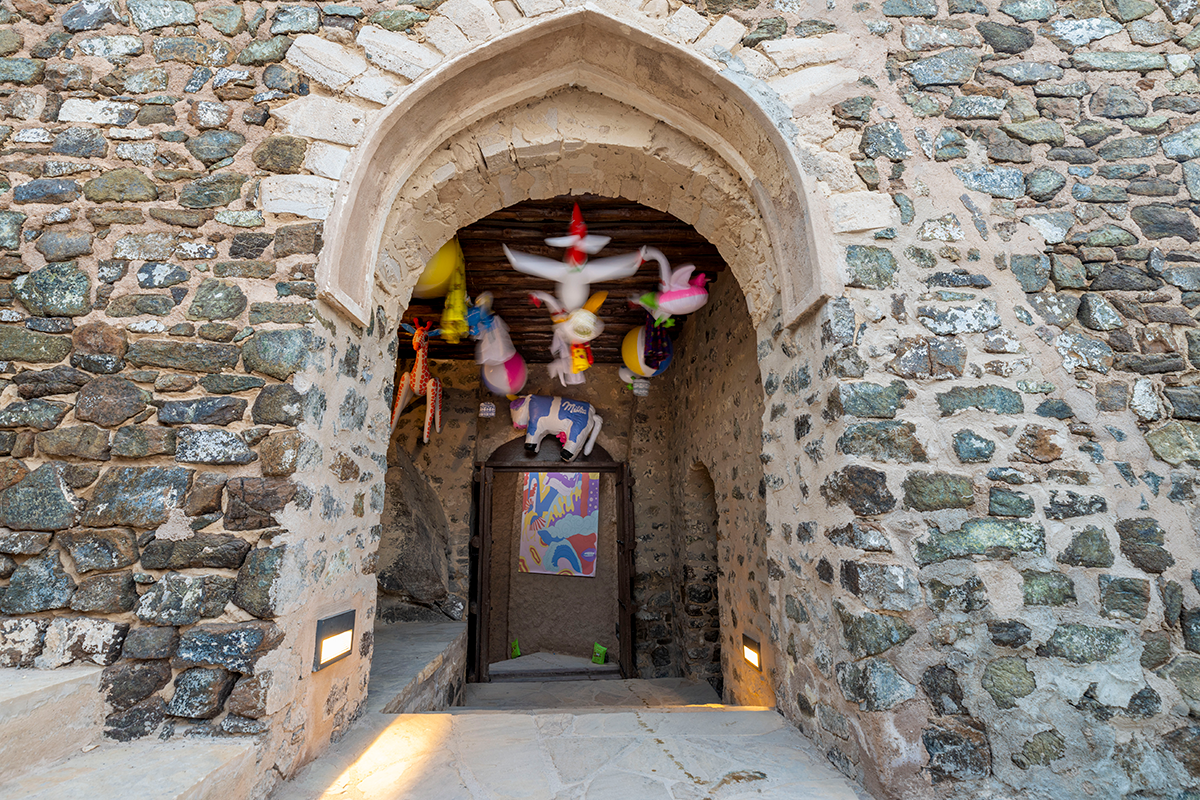
Oman as a potential global art and culture hub?
Last December, Oman’s Ministry of Heritage and Tourism invited companies and institutions to bid for the management and development of other heritage sites, including Dibba Castle, Haibi Fort, and Saham Fort. As part of their bids, the ministry required interested parties to submit proposals on how they would market the site on both the commercial and cultural levels, and to provide a program of cultural activities, events, and workshops they would curate to activate it. This seemingly indicates a move toward a model like that of Muttrah Fort or Jabreen Castle, which has also played host to a number of arts and cultural events and activities.
To date, both Muttrah Fort and Jabreen Castle have largely been host to local talents. But with so many heritage structures spread across different regions that could be put to various uses and a growing interest in the arts and culture among the population, Oman has the opportunity to become a unique art and culture hub, not only regionally but globally. The sultanate has artists and other cultural practitioners of a high caliber, and by positioning them in the appropriate historic settings, as well as engaging regional and international artists and other cultural practitioners, as other Arab Gulf states have done, such a goal could be achievable. This could help to not only further stimulate cultural tourism but, in the process, also give centuries-old heritage sites a new lease on life, enabling them to retain their importance and play a valuable role even in this significantly different time.
Sharifah Alhinai is the founder of Sekka and the Khaleeji Art Museum. She is a graduate of the University of Oxford and The School of Oriental and African Studies. Alhinai was the recipient of the Arab Woman Award 2020, and was named as one of Forbes Middle East’s 30 Under 30 Most Impactful Young Innovators Who Are Determined to Change the World in 2023. She tweets at @sharifahalhinai.
Top photo by Burair Alkishri for Sekka.
The Middle East Institute (MEI) is an independent, non-partisan, non-for-profit, educational organization. It does not engage in advocacy and its scholars’ opinions are their own. MEI welcomes financial donations, but retains sole editorial control over its work and its publications reflect only the authors’ views. For a listing of MEI donors, please click here.













